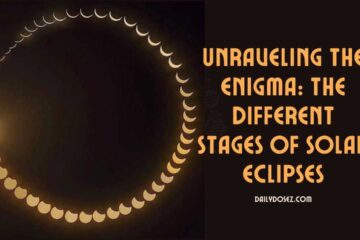Black holes have long captivated the human imagination, representing a cosmic enigma that pushes the boundaries of our understanding of the universe. These mysterious celestial objects possess immense gravitational pull, capable of bending space and time to an extreme degree.
In this article, we embark on a captivating journey to explore the intriguing depths of a black hole and shed light on the extraordinary phenomena that occur within.
The Formation of a Black Hole
Black holes form from the remnants of massive stars that have exhausted their nuclear fuel. When such a star reaches the end of its life, it undergoes a cataclysmic event known as a supernova.
The explosion disperses the outer layers of the star into space while leaving behind an incredibly dense core called a singularity.
The Event Horizon
The defining feature of a black hole is its event horizon, which marks the point of no return. Once an object crosses this boundary, it is trapped within the gravitational clutches of the black hole, unable to escape.
The event horizon is directly proportional to the mass of the black hole—the larger the mass, the larger the event horizon.
Spaghettification and Tidal Forces
As an object approaches the event horizon, it experiences a phenomenon known as spaghettification. The intense gravitational forces exerted by the black hole cause extreme stretching along the object’s length and squeezing along its width, resembling long, thin strands of spaghetti.
Additionally, tidal forces near a black hole are incredibly strong. The difference in gravitational pull between the object’s head and feet generates a tidal effect, stretching the object apart. This phenomenon is often referred to as “tidal spaghettification.”
Singularity: A Point of Infinite Density
Deep within the heart of a black hole lies the singularity—a point of infinite density where the laws of physics, as we know them, break down.
Classical physics cannot describe or predict what happens at the singularity. It is believed that at this point, matter is crushed to an unimaginable state, where space and time cease to exist as we understand them.
Time Dilation and Gravitational Redshift
Due to the immense gravitational pull near a black hole, time behaves differently compared to the relative time observed in space. This phenomenon, known as time dilation, causes time to slow down significantly for an observer near the event horizon.
Gravitational redshift is another consequence of the extreme gravitational field. It causes light to lose energy as it tries to escape the pull of the black hole, resulting in a shift towards longer wavelengths. As a result, light emitted near the black hole’s event horizon appears redshifted to an outside observer.
Hawking Radiation and Black Hole Evaporation
In 1974, physicist Stephen Hawking proposed that black holes are not completely black, but instead emit a faint form of radiation known as Hawking radiation. This radiation is a consequence of quantum effects near the event horizon and results in the slow evaporation of black holes over an immense period of time.
Hawking radiation suggests that black holes can gradually lose mass and energy until they eventually evaporate completely. However, this process occurs over an extremely long timescale, making it practically impossible for any known black hole to have fully evaporated since the age of the universe.
Conclusion
The realm inside a black hole remains one of the most mind-boggling and least understood phenomena in astrophysics. While our understanding of black holes has grown significantly over the years, many questions still remain unanswered.
By delving into the concepts of event horizons, singularities, time dilation, and Hawking radiation, we gain a glimpse into the mysterious inner workings of these cosmic giants. The exploration of black holes continues to push the boundaries of human knowledge, inspiring awe and fascination for the wonders of the universe.




